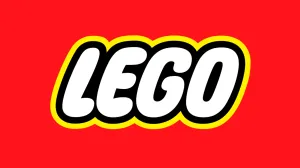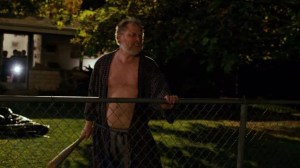Justin Jordan, best known for his work on creator-owned books like Luther Strode and Spread but also a writer on projects like Green Lantern and Dead Body Road, is set to take on Summoners War: Legacy, a new series set years before the events of the wildly popular Summoners War game and taking a look at the events that helped shape the universe of the game leading up to the stories fans are familiar with. You can order a “con-exclusive” special edition of the first issue from Skybound’s website, released during their Skybound Xpo last month, and the full series is coming soon.
Videos by ComicBook.com
Joining Jordan on the series are artist Luca Claretti, colorist Giovanna Niro, and letterer Deron Bennett. The trio will create new stories featuring some famliar names and a lot of new faces, some of whom you can see in the art below.
Jordan joined ComicBook.com to talk about the series, the thrills, and challenges of creating a new version of a popular universe.

Obviously, you’re no stranger to worldbuilding. Is it fun to get to do a prequel to a big property, where you’re kind of gifted with this universe but you can set a lot of the rules yourself in a way you can’t with a lot of licensed books?
It is. I think one thing people don’t appreciate about doing stuff in other people’s world is that to a certain extent, it’s like poetry. Which probably bears some explanation: you can do free verse type stuff, but there’s also an appeal to writing stuff with a certain rhyme scheme. I mean, you write haiku for the limitation of having to do it in 5 – 7 – 5 (which is the western version – there’s a lot to haiku beyond that). A lot of my work for hire stuff is fun because of that, because I am working within fences and it requires a different, and interesting, kind of creativity.
It feels like you’re a go-to for Skybound, and that’s kind of rare. How has that relationship shaped up, is it just that you’ve had success with them over the years?

I think it’s mostly that we like working with each other. The personally-flattering version is that I think Skybound has a good sense of what my strengths are. Not just creatively. I mean, I think I’m pretty good at coherent world building, which was useful in my role with Summoner’s War, but I am also collaborative and not usually a jerk, which is really useful if you want long term relationships with publishers and editors.
You talk a lot about how the webcomics you do get read by exponentially more people than read your print comics. With something like this, there’s millions of people playing the game. Is the hope to pull some of them into comics, or do you think that’s naive?
It’s certainly the hope. I don’t think it’s naive, as long as you have your expectations calibrated right. So, take Urban Animal, which is the comic I do at Webtoon. We’ve got, as I write this, 463,000 subs. Of those, each week, around 80,000 or so read the comic. Of that 80,000, you get about 15,000 or so dropping a like, and of those, you get a couple thousand people who will pay to read it early.
So with anything, you need to be prepared for a fraction of a fraction of a fraction. The thing is though, that can STILL be a huge number by direct market comic standards. You just need to have your expectations reasonable.

AND you need to give them a path to get there. This is a problem for movies and comics, I think. When The Boys premiered on Amazon, it was real easy to buy the source material, because it was right there, and they sold a LOT of them. With this, Com2uS is working really hard to maximize that crossover and give players a way to move into the comics. So, we’re all hoping that pays off for everyone.
How different are things in the years before the events of the game? With some or the returning characters, will they be much different?
Well, it’s World War Alea. This is set towards the end of the Hundred Years War, and before the Sky Arena was started, so the world is fairly different because this is the period when nations were actually at war. It’s thirty odd years before the current setting of the game, so some of the recognizable cast haven’t been born yet, and others are, obviously, much younger. But you’ll get to see some very familiar faces.
Are the allegiances and endgames mostly the same, or are we going to find out that some characters evolve between here and there?
Always shifting. That’s actually the primary conflict between Rai and Tomas, the protagonists. Both of them have a certain, fairly simplified, view of the world. Which are different from each other, so they have some conflict there, but they’ll also have to learn that their outlooks are both right and wrong.
So, the main characters will change a lot. My go to, for the kind of character development I’m going for, is Avatar: The Last Airbender. Which is to a certain extent my template for how the series operates.

Will you be introducing some original characters?
Tons. I mean, Rai and Tomas, the heroes, are arguably new characters, although they’ve been mentioned elsewhere. But the first issue alone introduces Abuus Dein, Tatakana, and Voss Ayers. Which, I love creating characters, so that aspect has been super fun.
Video game adaptations can be hard, because characters are often left intentionally vague so more people can relate to them. Is that a challenge here, or does the source material feel specific enough that you don’t have to grab at loose ends?
This is one of the advantages of working before the game’s current timeline, because I can pretty much just create from whole cloth. And for the most part, the ones I am not the first writer for, I am involved with the background of, so it’s not been hard. Or any harder than usual, anyway.








